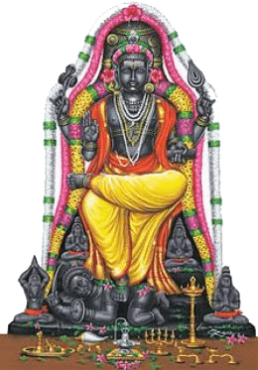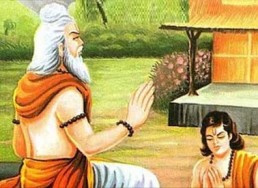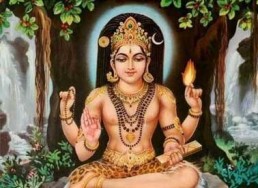Samasta Jana Kalyane
नमामि चिन्मयं देवं सद्गुरुं ब्रह्मविद्वरम्॥७॥
namāmi cinmayaṃ devaṃ sadguruṃ brahmavidvaram..7..

Description
Other Guru Shlokams
Guru Ashtakam
The Guru Ashtakam is a Sanskrit hymn composed by Adi Shankaracharya, the 8th-century Indian philosopher and saint who consolidated the doctrine of Advaita Vedanta. In the Vedan
Guru Brahma
Guru Brahma - Known as Guru Mantra or Guru Mahamantra. The guru is Brahma (Bramha) the guru is Vishnu, the guru is Maheshwara (Siva), the guru is the Self-revealing limitless Brahman. Salutations to that revered guru. - In Sanskrit with English…
Guru Paduka Stotram
Guru Paduka Stotram is a very powerful chant that glorifies the "Padukas (Sandals) of the Guru," which are symbolically represented as "the boat to help cross the endless ocean
Guru Sishya Parampara
Guru-Sishya Parampara is the teacher-disciple lineage. Being a civilization that respects experiential knowledge, we hold high respect for the teacher of such knowledge. Below
Guru Stotram
Guru stotram is a selection of 14 verses from the Guru Geeta, found in Skanda Purana. It is a conversation between Lord Shiva & Parvati on the glory of the Guru. Gu – Darkness. Ru – Remover.
Ishvaro Guru Atmeti
Shlokams,Shiva,Dakshinamurthy,Guru,Sankara
Salutations to Lord Dakshinamurti, who is all-pervasive like space but who appears (as though) divided as Lord, Guru, and the Self.
Sada Shiva Samarambam
Salutation to the lineage starting with lord Sadasiva, with Adi Sankara in the middle and continuing up to my immediate teacher.
Samasta Jana Kalyane – Guru – In Sanskrit, English Translation, Meaning, Significance and Audio.


